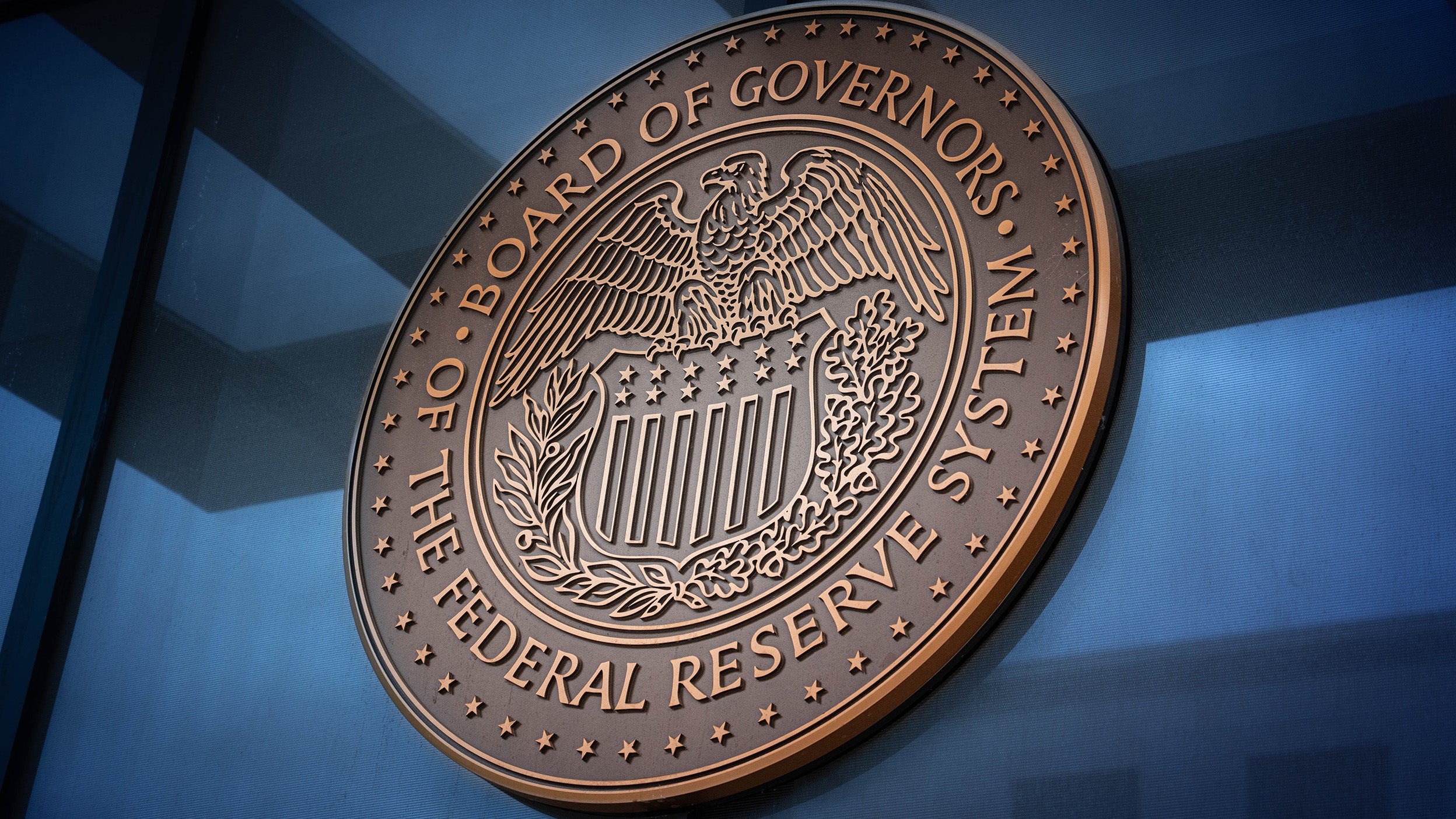
Markets and Economy Navigating Fed monetary policy uncertainty and the markets
A rate cut, which markets are pricing in despite Fed member differences, and an expected improving economy in 2026, could support stocks.

High yield bond spreads indicate that the market is optimistic about the chances that the US will avoid a recession.
US production of 13.4 million barrels of oil per day may provide a buffer against any shocks from the Israel-Iran war.
Bond market expectations for long-term inflation remain stable, suggesting tariffs may only cause a short-term price shock.
Linus Van Pelt: "Life is difficult, isn't it, Charlie Brown?"
Charlie Brown: "Yes, it is, but I've developed a new philosophy. I only dread one day at a time."
Our favorite blockhead may dread each day as it comes, but there’s a quiet optimism in him. He never stops trying to kick that football or to fly that kite. I can relate. This is one of those moments when I dread each day, unsure of what the next news cycle or round of messages will bring. And yet, I, too, wrestle with pessimism.
Author Mustafa Suleyman recently introduced the concept of the pessimism aversion trap, the psychological tendency to avoid engaging with negative possibilities. Don’t get me wrong, I let pessimism creep into my personal life. After all, I’m a New York Giants fan. However, my aversion to pessimism lies in how we view society’s ability to overcome challenges and build a better future. That boy has cried wolf one too many times.
Take, for example, the many doomsday predictions that never quite came to pass:
Suleyman might argue that falling into the pessimism aversion trap could lead to dangerous complacency. I’m mindful of that. Still, I can’t help but contextualize the issues currently weighing on investors. Here are two examples:
As Charlie Brown also said, “Learn from yesterday, live for today, look to tomorrow, rest this afternoon.”
…the market doesn’t believe that a recession is coming. Since the beginning of the year, US high yield corporate bonds have outperformed the S&P 500 Index.3 High yield bond spreads have tightened by more than 150 basis points since April 8, when spreads peaked.4 Also, this year, the S&P 500 Industrials sector has significantly outpaced the broader index.5
Recession? The market seems to think otherwise.
A: Geopolitical conflicts and wars often trigger immediate volatility in financial markets, but investors should take a step back and ask two key questions: Does this event meaningfully alter the growth outlook for the world’s largest economies? Does it change expectations for how major central banks will respond? If the answer to both is no, then even tragic and unsettling events are unlikely to derail broader market cycles.
The thinking would only shift if something were to occur that changed the calculus. For example, a closure of the Strait of Hormuz, a vital route for global energy flows bordered to the north by Iran, could significantly disrupt oil and natural gas markets and weigh on global economic growth. However, such a scenario doesn’t appear imminent. It's also worth noting that the US is currently producing 13.4 million barrels of oil per day, a record level that provides a significant buffer against external shocks.6
A: Imports into the US surged in the first quarter as businesses rushed to stockpile goods ahead of new tariffs.7 Since then, imports have declined sharply. As we move through the summer and into the fall, the impact of these tariffs is expected to appear more clearly in inflation data. If anything, the greater concern for the stock market may be if tariffs fail to show up in inflation data. This would imply that businesses are absorbing the costs, potentially hurting corporate profitability.
The encouraging longer-term view is that bond market expectations for long-term inflation remain stable, suggesting that tariffs may cause a short-term price shock rather than sustained inflation.8
“I would like to get this guy to lower interest rates because if he doesn’t, we have to pay.”
— President Donald Trump
I apologize for returning to this topic, but the independence of the US Federal Reserve (Fed) remains a critical safeguard against significantly higher interest rates on government debt. While lowering rates in response to a weakening labor market is a legitimate policy response, doing so to placate the executive branch is a far more troubling prospect. A historical example worth noting is the trajectory of US interest rates following President Nixon’s politicization of the Arthur Burns-led Fed, an episode that highlights the dangers of compromising central bank autonomy.
Currently, the average maturity of US debt is approximately six years.9 Treasury yields, particularly in the intermediate to long end of the curve, tend to reflect the broader strength of the US economy. Historically, a sharp decline in these yields has often signaled a recession, an outcome that would likely further strain the US fiscal position.
Recent dollar weakness has prompted the usual chorus proclaiming the end of US exceptionalism.10 I choose to frame it differently. A pullback from lofty levels offers a tailwind for US multinationals and opens the door for capital to explore opportunities beyond American borders.
David Nadel joined our Greater Possibilities podcast to discuss investing in international small- and mid-sized (SMID) businesses. Here are some takeaways:
Recent international equity strength is attributed to a reversal of the 15-year trend favoring US stocks, driven by a weakening dollar and shifting global growth dynamics.11
International SMID stocks (small- and mid-cap) are significantly undervalued compared to US counterparts, trading at a 40–50% discount on the forward price-to-earnings ratio, offering compelling upside potential.12
International SMID companies may be better positioned to benefit from global rate cuts, especially in regions not facing potential US-style inflation pressures. High quality, long-duration assets in these markets potentially stand to gain.
US investors are under allocated to international SMID (<1%) compared to international large caps and US SMID, largely due to risk perceptions that David says are misplaced.13
My travel has (mercifully) slowed. ‘Tis not the season for investment conferences. I’ll instead take a moment to congratulate the class of 2025. Wishing you all the best as you set out on the road ahead!

A rate cut, which markets are pricing in despite Fed member differences, and an expected improving economy in 2026, could support stocks.

We believe global equities may continue to rise in the new year, and we expect new opportunities to be unlocked as market leadership evolves.

Get insight on the recent sell-off in the artificial intelligence trade, the potential for a Santa Claus rally, and the K-shaped economy.


Get the latest information and insights from our portfolio managers, market strategists, and investment experts.
Important information
NA4609941
Image: Astroid / Adobe Stock
All investing involves risk, including the risk of loss.
Past performance does not guarantee future results.
Investments cannot be made directly in an index.
This does not constitute a recommendation of any investment strategy or product for a particular investor. Investors should consult a financial professional before making any investment decisions.
A basis point is one-hundredth of a percentage point.
The Bloomberg US Corporate High Yield Bond Index measures the US dollar-denominated, high yield, fixed-rate corporate bond market. Securities are classified as high yield if the middle rating of Moody’s, Fitch, and S&P is Ba1/BB+/BB+ or below.
Forward price-to-earnings (P/E) ratio is a variant of a company’s price-to-earnings ratio and is calculated by dividing the company’s current share price by its expected earnings, usually for the next 12 months or the next full fiscal year.
Fixed income investments are subject to credit risk of the issuer and the effects of changing interest rates. Interest rate risk refers to the risk that bond prices generally fall as interest rates rise and vice versa. An issuer may be unable to meet interest and/or principal payments, thereby causing its instruments to decrease in value and lowering the issuer’s credit rating.
Credit spread is the difference in yield between bonds of similar maturity but with different credit quality.
High yield bonds, or junk bonds, involve a greater risk of default or price changes due to changes in the issuer’s credit quality. The values of junk bonds fluctuate more than those of high quality bonds and can decline significantly over short time periods.
Inflation is the rate at which the general price level for goods and services is increasing.
The MSCI All Country World (ACWI) ex USA Index is an unmanaged index considered representative of large- and mid-cap stocks across developed and emerging markets, excluding the US.
The MSCI World ex USA Small Cap Index captures small-cap representation across 22 of 23 developed markets (DM) countries (excluding the US).
The risks of investing in securities of foreign issuers can include fluctuations in foreign currencies, political and economic instability, and foreign taxation issues.
The Russell 2000® Index measures the performance of small-capitalization stocks and is a trademark/service mark of the Frank Russell Co.®.
The S&P 500® Index is an unmanaged index considered representative of the US stock market.
The S&P 500® Industrials Index includes stocks in the S&P 500 Index classified as industrial companies based on the Global Industry Classification Standard methodology. The index is market-cap weighted.
The S&P 500 Industrials Sector GICS Level 1 Index represents the industrial sector within the S&P 500 Index, as defined by the Global Industry Classification Standard (GICS). It includes companies involved in capital goods, commercial and professional services, and transportation.
Stagflation is an economic condition marked by a combination of slow economic growth and rising prices.
Stocks of small- and medium-sized companies tend to be more vulnerable to adverse developments, may be more volatile, and may be illiquid or restricted as to resale.
In general, stock values fluctuate, sometimes widely, in response to activities specific to the company as well as general market, economic and political conditions.
The yield curve plots interest rates, at a set point in time, of bonds having equal credit quality but differing maturity dates to project future interest rate changes and economic activity.
The opinions referenced above are those of the author as of June 27, 2025. These comments should not be construed as recommendations, but as an illustration of broader themes. Forward-looking statements are not guarantees of future results. They involve risks, uncertainties, and assumptions; there can be no assurance that actual results will not differ materially from expectations.
This link takes you to a site not affiliated with Invesco. The site is for informational purposes only. Invesco does not guarantee nor take any responsibility for any of the content.